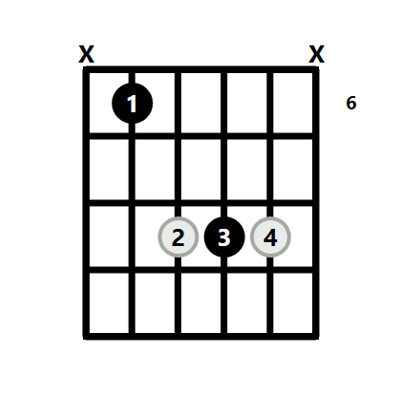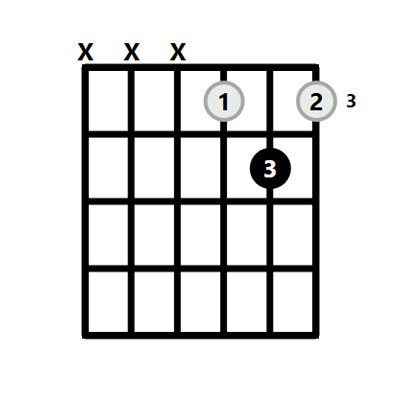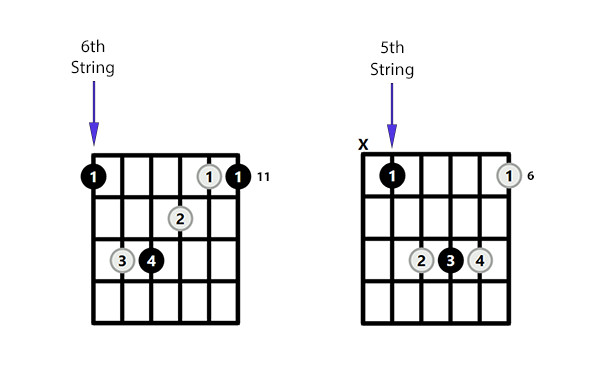The Eb Major chord, often simply called the Eb Guitar Chord, is a foundational chord for guitarists across genres. From rock and blues to jazz and pop, the rich sound of the Eb chord appears in countless songs. Whether you’re just starting your guitar journey or looking to expand your chord vocabulary, understanding the Eb chord is essential.
Delving into the Theory of the Eb Major Chord
Before we explore the fretboard, let’s understand the musical DNA of the Eb Major chord. Like all major chords, Eb Major is built upon a specific formula of notes and intervals.
- Notes: The Eb Major chord is composed of three notes: Eb, G, and Bb.
- Scale Connection: These notes are the 1st (root), 3rd, and 5th degrees of the E Flat Major scale. Understanding scales enhances your chord knowledge and musicality.
- Interval Formula: From the root note (Eb), the Eb Major chord uses these intervals: Major 3rd, minor 3rd, and Perfect 4th (returning to the root in the next octave). This interval pattern is consistent for all Major chords, making it a valuable concept to grasp.
- Key of Eb Major: The Eb Major chord is the starting point, the ‘I’ chord, in the key of Eb Major. The complete set of chords in this key are Eb Major, Fm (F minor), Gm (G minor), Ab (Ab Major), Bb (Bb Major), Cm (C minor), and D diminished. Learning keys helps you understand chord progressions and song structures.
10 Diverse Ways to Play the Eb Chord on Guitar
Here’s a visual guide showcasing 10 different voicings of the Eb Major chord. Experiment with these shapes to find your preferred sounds and fingerings.
 Diagram showing 10 different shapes for the Eb Major chord on guitar fretboard.
Diagram showing 10 different shapes for the Eb Major chord on guitar fretboard.
The Standard Eb Chord Shape: Rooted on the 5th String
The most commonly taught Eb chord is a barre chord variation, often positioned at the 6th fret. While technically a barre chord, many guitarists play it without barring the entire fret, focusing on the root note on the 5th string.
 Standard Eb guitar chord shape diagram, root-5 barre form on the 6th fret.
Standard Eb guitar chord shape diagram, root-5 barre form on the 6th fret.
The Easy Eb Chord Shape: A Beginner-Friendly Version
For beginners or when quick chord changes are needed, the simplified Eb chord shape is invaluable. This version utilizes only the top three strings and is essentially a movable D chord shape shifted up one fret. It’s a fantastic entry point to playing Eb if barre chords feel challenging initially.
 Easy Eb guitar chord shape diagram, simplified version using the top three strings.
Easy Eb guitar chord shape diagram, simplified version using the top three strings.
Step-by-Step Guide to Playing the Standard Eb Major Chord
Let’s break down the standard Eb chord shape into manageable steps:
- 1st Finger: Place your index finger on the 6th fret of the 5th string (A string).
- 2nd Finger: Place your middle finger on the 8th fret of the 4th string (D string).
- 3rd Finger: Place your ring finger on the 8th fret of the 3rd string (G string).
- 4th Finger: Place your pinky finger on the 8th fret of the 2nd string (B string).
- Strumming: Strum downwards from the 5th string (A string) across the top strings, avoiding the 6th string (low E string).
Following these steps meticulously helps ensure you’re forming the chord correctly, especially when learning from diagrams can be confusing.
Unleashing the Power of Eb Barre Chords
Barre chords are movable chord shapes, and Eb is readily playable as both a root 6 and root 5 barre chord. The root 6 barre shape for Eb starts at the 11th fret, while the root 5 barre shape, as we’ve seen in the standard shape, begins at the 6th fret. Mastering barre chords unlocks chord versatility across the fretboard.
 Eb barre chord shapes on guitar diagram, root 6 and root 5 barre chord forms.
Eb barre chord shapes on guitar diagram, root 6 and root 5 barre chord forms.
Exploring Eb Major Triads and Inversions
Beyond full chord shapes, triads – three-note chords – offer a leaner, harmonically interesting approach to Eb. Triads also introduce the concept of inversions, where the order of notes is rearranged, creating different bass notes and sonic flavors. The Eb Major triad inversions are:
- Root Position: Eb – G – Bb (Root note is Eb)
- 1st Inversion: G – Bb – Eb (3rd of the chord, G, is the lowest note)
- 2nd Inversion: Bb – Eb – G (5th of the chord, Bb, is the lowest note)
Here are diagrams showing various ways to play Eb Major triads and their inversions on the guitar.
 Eb Major triad shapes on guitar diagram, showing root position and inversions.
Eb Major triad shapes on guitar diagram, showing root position and inversions.
Keys Where the Eb Chord Resides
Understanding which keys feature the Eb chord expands your musical context and songwriting possibilities. The Eb chord naturally occurs in:
- Eb Major: (Eb, Fm, Gm, Ab, Bb, Cm, Ddim) – As the tonic chord, Eb is central to this key.
- Bb Major: (Bb, Cm, Dm, Eb, F, Gm, Adim) – Eb functions as the IV chord.
- Ab Major: (Ab, Bbm, Cm, Db, Eb, Fm, Gdim) – Eb serves as the V chord.
- C minor: (Cm, Ddim, Eb, Fm, Gm, Ab, Bb) – Eb is the III chord in the relative minor.
- G minor: (Gm, Adim, Bb, Cm, Dm, Eb, F) – Eb acts as the VI chord.
- F minor: (Fm, Gdim, Ab, Bbm, Cm, Db, Eb) – Eb is the VII chord.
Alternative and Useful Eb Chord Shapes
While the standard shapes are crucial, exploring alternative Eb voicings can add color and texture to your playing. These shapes might not be as common but offer unique sonic options and fingerings.
Chord Substitutions for Eb
The Eb chord can be creatively substituted with related chords to add harmonic variation. Consider using:
- Eb sus4: Adds a suspended, unresolved quality. (Eb sus 4 chord)
- Eb sus2: Creates a brighter, more open sound. (Eb sus 2 chord)
- Eb add9: Introduces a jazzy, extended harmony. (Eb add 9 chord)
Conversely, the Eb Major chord can often stand in for more complex chords with Eb as the root, such as Eb Major 7 chord or Eb7 chord, particularly in simpler musical contexts. However, it’s not a substitute for minor chords.
Scales to Solo and Improvise Over the Eb Chord
To craft guitar solos or melodies over an Eb Major chord, certain scales are particularly effective:
- Eb Major Scale: The most natural choice, providing consonant and diatonic melodies.
- Eb Pentatonic Major Scale: A simpler, bluesier option within the major tonality.
- Eb Blues Scale: Introduces bluesy notes for a soulful improvisation.
- Eb Lydian Scale: Offers a brighter, more exotic sound with its raised 4th degree.
Expand Your Chord Knowledge
Mastering the Eb guitar chord is a significant step in your guitar journey. By understanding its theory, exploring various shapes, and knowing its musical applications, you’ll unlock new creative possibilities on the fretboard. Continue to expand your chord vocabulary and musical knowledge to become a well-rounded guitarist.
[
